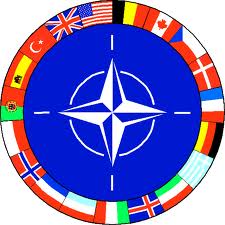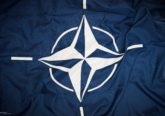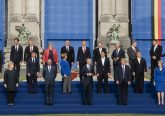 The North Atlantic Treaty Organisation is a more global institution than its name implies. Although the security of its European and North American member states forms its core purposes, a strictly transatlantic or regional view is too narrow to fully describe what NATO does. NATO’s global engagement consists of three essential features. First, military operations – from peacekeeping to full spectrum war fighting – involves NATO in places far away from its home Euro-Atlantic area. Second, NATO maintains political and military ties with countries in neighbouring regions and around the world. Third, NATO is a significant enough global actor to interact with global trends.
The North Atlantic Treaty Organisation is a more global institution than its name implies. Although the security of its European and North American member states forms its core purposes, a strictly transatlantic or regional view is too narrow to fully describe what NATO does. NATO’s global engagement consists of three essential features. First, military operations – from peacekeeping to full spectrum war fighting – involves NATO in places far away from its home Euro-Atlantic area. Second, NATO maintains political and military ties with countries in neighbouring regions and around the world. Third, NATO is a significant enough global actor to interact with global trends.
NATO’s membership may be regional, but its activities are global. The post-Cold War
‘out of area’ debate is entirely anachronistic given the range of military operations in which NATO forces are engaged outside the territories of its members over the past twenty years. NATO’s first such mission involved peacekeeping in Bosnia and Herzegovina from 1995 to 2004 and the Alliance continues to provide support to the European Union-led operation there. The Kosovo air campaign in 1999 and the recent air operations in Libya involved NATO in air combat. NATO’s command of the International Security Assistance Force in Afghanistan, since 2003, has been its most groundbreaking venture yet, involving NATO in full spectrum joint military operations thousands of kilometres from the nearest Alliance territory. Moreover, the ISAF mission also put NATO in charge of forces from non-NATO troop-contributing countries, as diverse and far-flung as Australia, South Korea, Armenia and Bahrain. NATO has also pursued naval and counter-piracy operations off the Horn of Africa and in the Gulf of Aden, a training mission in Iraq and advisory assistance to the African Union. East Asia and South America stand out among the few regions of the world in which NATO has not conducted significant military operations.
Global military operations necessarily involve political ties in neighbouring regions and around the world. Partnership activities often include not only defence and military cooperation, but also subjects as broad as civil-military relations, civil emergency planning, or scientific and environmental research. Partner relations have been institutionalised in various settings, such as the NATO-Russia Council, NATO-Ukraine and NATO-Georgia Commissions, Mediterranean Dialogue and Istanbul Cooperation Initiative. The Partnership for Peace and the Euro-Atlantic Partnership Council involve 22 regional partners in Europe and Eurasia. NATO’s ‘Global Partner’ countries include bilateral programmes with Australia, Japan, South Korea, New Zealand, Pakistan and Mongolia. In all, more than 40 non-NATO countries in Europe, Asia, Africa and the Middle East participate in one of these partnerships. Moreover, NATO maintains institutional links with other multilateral bodies, including the Organisation for Security and Cooperation in Europe, the European Union and the United Nations.

Finally, NATO is a significant enough global actor that its activities must interact with global trends. Financial, political and social developments are highly interrelated with matters of peace and security. NATO’s current ‘Smart Defence’ initiative, aiming to boost cooperation among Alliance members, is a direct result of broad trends in a new global economy of constrained resources, which is prompting governments to trim defence budgets and force structures. Recent announcements that the United States intends to rebalance its military posture away from Europe and towards Asia have also advanced the Smart Defence agenda. The Atlantic Alliance is a community based on shared values and interests, the global importance of which have more than once involved NATO in efforts to promote peace and security outside the territory of its member-states.
Global issues invite coordinated global action. NATO has taken a stake in studying and preparing for emerging and global security challenges including cyber attacks, energy security, environmental security, missile defence, as well as terrorism and weapons of mass destruction. The three core tasks NATO adopted in its new Strategic Concept at the Lisbon Summit in 2010 are collective defence, crisis management and cooperative security. None of these are exclusively or even necessarily regional. NATO promotes its purposes and values through a global approach to international peace and security.
In sum, although the transatlantic link defines the membership and the orientation of interests that NATO is meant to serve, its activities – military operations, political partnerships, and substantive concerns – are all global to a remarkable degree. While strong transatlantic military capabilities are at NATO’s core, describing the Alliance only in these terms would be incomplete. NATO is a significant global player, exercising broad political and military influence across much of the world while remaining the preeminent institutional link between Europe and North America.
Seth Johnston is a doctoral candidate in international relations at Oxford University.
Valentina Gevorgyan holds master’s degree in political science from American University of Armenia. Both are members of the Atlantic Council’s Young Atlanticist Working Group. The views expressed are those of the authors alone.









1 Comment